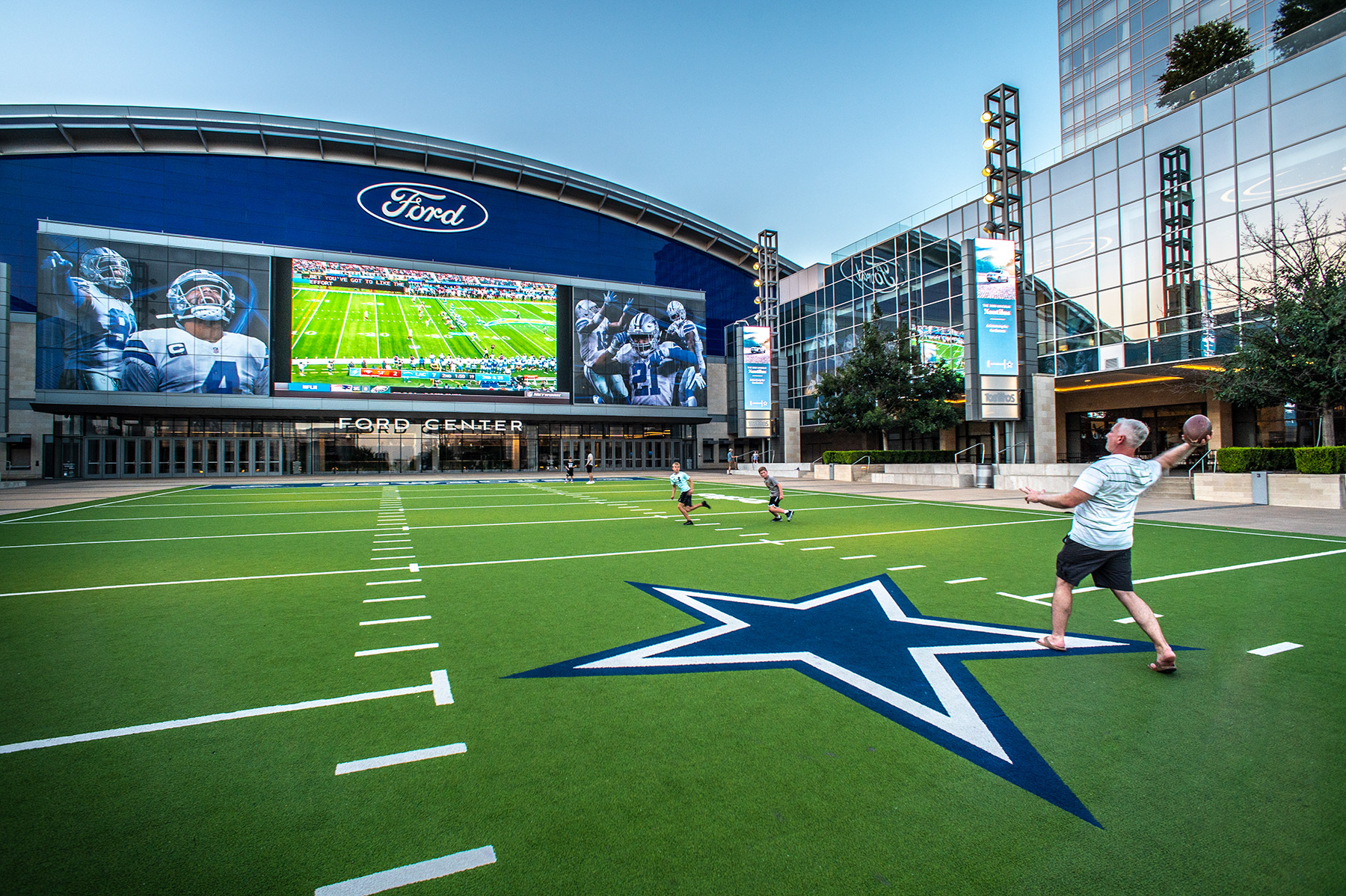Part Two of the popular podcast Freaknomics Radio’s visit to North Texas asks, “How Did a Hayfield Become One of America’s Hottest Cities?” Part One, you’ll recall, attempted to find out why everyone is moving to Dallas. (Even though the population of Dallas proper has been just about flat over the last five years; the county only added 44,000 people in that time, a growth rate of about 3.4 percent.)
The hayfield in question is Frisco, where host Stephen J. Dubner visits Dallas Cowboys World HQ and talks to boosters about the city’s explosive growth, its suburban county’s red but increasingly purple politics, and its “frenemy” relationship with Dallas. While the city of Dallas grew 9 percent over last decade, its northern neighbors outpaced it at 36 percent.
Dubner identifies that one of the biggest stories behind “why everyone is moving to Dallas” is this competition between Dallas and its suburbs. He returns to economist Cullum Clark on the subject of corporate relocations, in which this competition often and most obviously manifests.
It’s a competition that Dallas has often lost in recent years: Mayor Eric Johnson, who is featured again as an interviewee in this episode and again does not ferry the Freakonomics folks to or from the airport, has recently emphasized a need for the city of Dallas to assert itself as the alpha dog in the region. He touts the city’s landing of a Uber as a major corporate tenant—before Dubner points out the ride-sharing company backed out of its plans for a major new office.
Businesses, no surprise, like so-called “business-friendly” policies and giant tax breaks. They also like being able to do business, something Dallas’ dysfunctional city government (explored in Episode One) doesn’t always make easy. Affordability, jobs, and schools are important—maybe the most important—factors for the people moving here. But here’s a long quote from Clark in which he says that places like Frisco also win this battle by, in some ways, becoming more like the cities they’re competing with:
“Do they compete on the basis of tax incentives? To some degree, yes. But every one of them would tell you the same thing, Stephen. They would say that the tax incentive is a sideshow. The thing that we’re going to win or lose on, when we’re trying to attract families and attract employers — it’s the issues of affordable quality of life. It’s creating a place where people want to be. For example, in some of these northern suburban cities, when I’ve talked to people who are on the front lines, they will say, ‘You know, it used to be that we talked to people from the finance function of a company, or they’re trying to figure out where the cheap location can be had.’ That’s not the case anymore. They’re increasingly talking to the human resources people, who know the kinds of talent that the company is trying to recruit, and they know where these kinds of people, particularly the younger ones, want to live. And they say, ‘Show me your neighborhood. Show me your walkable urban places that are interesting, culturally diverse.’ And if these cities don’t score high on that, they lose out. They’re also competing with each other in their schools.”
Go ahead and give Freaknomics Radio’s two-part Dallas adventure a shot if this stuff interests you. It’s a good listen, even if—and I say this as an avowed and lifelong fan of Sonny Bryan’s—somebody should have taken Dubner to some other restaurants. Here’s one more worthwhile observation, this time from the podcast host himself, on Frisco’s dramatic change from hayfield to whatever it is now:
“There will be change, that’s for sure. But that’s what cities do, that’s what they’re built to do: take in the new, change again and again, learn from the past, and charge toward the future. But is Frisco a city, in that sense, or just a suburb on steroids? Or maybe it’s something new altogether — a new model that may account for why places like the Dallas–Fort Worth metro have been booming the past few decades while older, more traditional cities are struggling.”
Get the D Brief Newsletter
Author




